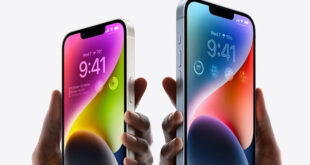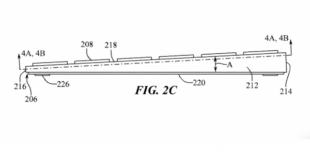
If mathematicians are collectively devices for turning coffee into theorems, as Alfréd Rényi once remarked, phone patents and purchase agreements are devices for turning patents into gobs and gobs of cash. Devices and technologies are so intertwined, it’s not unusual to see companies that compete in the same market and for the same customers buying and licensing technology from one another. It’s well known Samsung and Apple collectively extract virtually all of the profit from the phone market for themselves (and Apple gets the lion’s share of the profits, despite shipping far fewer devices per year than Samsung does). In fact, things are lopsided enough Samsung may make billions more in profits from owning the iPhone X’s screen than it will off its own Galaxy S8 devices, even though it earns much more per-device on the Galaxy S8.
Samsung is expected to earn $110 per iPhone X sold, compared with $202 in estimated earnings based on the value of the technology in the Galaxy S8. That’s the word from Counterpoint Technologies, a research firm that worked with the Wall Street Journal to develop its predictive model. The company estimates Apple will sell 130 million iPhone X’s through the next 20 months, compared with 50 million in cumulative Galaxy S8 sales. The OLED panel in the iPhone X itself has been estimated to run Apple has much as $120 per phone, compared with $45 to $55 per LCD-equivalent screen. Phones account for two-thirds of Apple’s yearly revenue, and the iPhone X is supposed to be a major boost to that bottom line.
There are, however, a few caveats to these estimates. First, we don’t know how many iPhone X’s Apple is planning to field, or if the company’s supplies are constrained in ways it can’t control. If Samsung’s OLED panels or another component are difficult to build and remain that way, Apple won’t be able to sell as many phones. Second, we don’t know if the iPhone X will have the same 20-month lifespan as other phones. Here’s Apple’s current product line (base models only):
The iPhone SE is $349, the iPhone 6s is $449, the 6s Plus is $549, the iPhone 7 is $549, and the iPhone 7 Plus is $669. The iPhone 8 is $700 new, while the 8 Plus is $800. Then you’ve got the iPhone X, waltzing in at $1,000 — but is it ever going to make sense to cut the price on the iPhone X to, say, $900, while introducing a new model for $1K?
As a move to clear inventory, maybe. As an ongoing strategy, probably not. High-end products are typically end-of-lifed as opposed to down-marketed; Intel didn’t exactly hold a clearing house sale for its HEDT desktop line when it introduced new parts. It just launched new parts and retired the old ones. In this case, Apple is actually raising the prices on its iPhone 8 line; the iPhone 6 and 6 Plus debuted at $649 and $749 respectively, while the iPhone 8 is now $699 to $799. For a look at how these new phones stack up against the Galaxy Note 8, check our comparison of the three devices.
The screen is gorgeous, even with the little notch.
The really interesting question is this: What does Apple do if the majority of its customers leap for the highest-end product and eschew the iPhone 8? If its manufacturing is unconstrained, this is pure upside for Apple, but it does present something of a problem going forward. Specifically, it suggests the iPhone 8 and 8 Plus are actually too cheap, if customers flock to higher-priced options. That doesn’t mean Apple would automatically kill off its “regular” products. But I suspect the Anniversary iPhone will do one of two things: Either it’ll signal to Apple its phone prices are actually too low and should be higher, or it’ll prove to be a one-off product that Apple launched as a special edition, with its features and capabilities waterfalling down to the iPhone 11 or 9 or whatever designation Apple chooses to use.
Even the collaboration between Samsung and Apple has precedent. As far back as 2013, we knew Microsoft made far more money from its own patent licensing agreements with Google than it did on Windows Phone. This led to the odd situation where Microsoft, a company competing with Google for the mobile market, found it more advantageous to license its technology to its competitor at an estimated rate of $5 to $15 per phone than to slug it out in court in an attempt to deny them the right to use whatever patents or licensing was covered in the agreement. Phones are, by their nature, an incredibly compact series of patents circuits, and a number of companies can make various claims to the technology inside them.
 #Bizwhiznetwork.com Innovation ΛI |Technology News
#Bizwhiznetwork.com Innovation ΛI |Technology News




